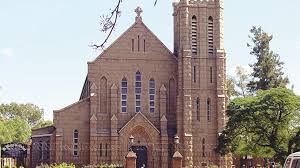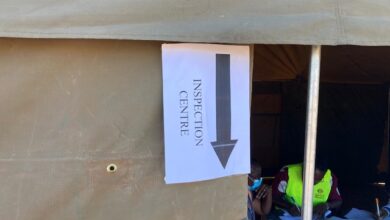Roman Catholic church celebrates 140 years of service in Matabeleland

The Roman Catholic Church in Matabeleland will this June celebrate its 140 years of existence and preaching the Christian gospel in the region.
Its history is as old as the Ndebele nation that was led by King Lobengula, who was interested in the skills the priests could teach his people but not their religion, which he felt would undermine his influence.
According to records from the Roman Catholic Church, the church grew roots in September, 1879, when Father Depelchin S.J, Father Augustus Law, S.J and Brother De Sadeleer arrived in what was known as “Gubulawayo.”
They established the first mission near King Lobengula’s Royal residence called “The Mission of the Sacred Heart.”
In 1881, King Lobengula ordered “Gubulawayo” to be burnt to the ground as he was moving to Emhlabathini, leaving the Jesuit fathers far from his people.
The remains of the mission at “Gubulawayo: are now a National Monument, although the church was given right to a small area adjacent where a commemorative cross and alter were erected in 1979 to mark the Centenary of the Roman Catholic Church in Zimbabwe.
Going back to history, King Lobengula, gave permission to the Jesuit fathers to start teaching new skills to his people at Empandeni.
Empandeni Mission regarded as the first formal Catholic Mission in Zimbabwe was set up in 1887.
In 1902 it relocated from the old station to current place where it is now located.
From then more missionaries were seconded from 1885, going into 1898 until in 1900s, which saw the population growing and need for schooling.
In an interview with CITE, Archbishop of the Bulawayo Archdiocese, Alex Thomas, said the 140 year celebrations would be held at Pumula South in June 29, where the history of the church would be shared in greater detail.
“The Archdiocese of Bulawayo was part of the extensive Zambezi Mission area under the care of the Jesuit fathers. In 1879 the Propaganda Fide in Rome granted the Jesuit Order a vast new territory as the Zambezi Mission.
“This included most modern Botswana, Zambia, Zimbabwe and a large portion of Mozambique along the Zambezi River. The first missions date from that time, although only Empandeni can boast of having its roots in the pre-colonial period,” he explained.
Archbishop Thomas said through time the original area was divided up into separate territories each with their own leading congregations.
“These have become the various Dioceses and Archdioceses that we know today, each with their own Diocesan structures, missions, parishes and religious workers,” noted the Archbishop.’
Archbishop Thomas said the current geographical extent of the archdiocese of Bulawayo was set in 1959 after the Tati Concession in Botswana was cut off to form the Vicariate of Francistown.
“The centre of the Archdiocese of Bulawayo is the Basilica Cathedral of St Mary’s Church of the Immaculate Conception in Bulawayo,” he said.
The present Archdiocese consists of 20 rural missions each service a number of outstations and schools as well as mission hospitals and clinics.
“There are 27 urban parishes with their many and varied associate structures there are nine Early Centre for Development centres, 14 primary schools and 13 secondary schools under the care of the Archdiocese as well as three vocational centres.
“There are two hospitals one in Matabeleland North and the other in Matabeleland South and three clinics all in Matabeleland South. These medical institutions treated more than 33 000 people in the past year alone,” he claimed.
According to the Archbishop, religious personnel has always been the key to evangelism in Matabeleland as of December 2018 there were 101 priests made up from local Zimbabweans along with priests from other parts of Africa, Australia, Paraguay, Europe and other parts of the world.
“The religious sisters (nuns) are as equally diverse in their national make up. Most of the 131 are Zimbabwean but some hail from other parts of Africa as well as Europe. The religious brothers are only nine in number but again the come from all over the world. This shows the true universality of God’s work,” Thomas highlighted.
During the 140-year celebration, the Roman Catholic Church will also launch a publication that details the birth and journey of the church in Matabeleland.







I am delighted to hear about the growth of Catholic Church in these places . I pray to God to send more and more harvestors to this field .I am sure that Archbishop Alexander Thomas will be able to do much for the people there , by the grace of God . I wish him and the other priests and Nuns all the best in their efforts to proclaim the Word of God to the people in these land .Also Best wishes for their celebrations of 140 years of the Church in that soil .May God Bless them all.